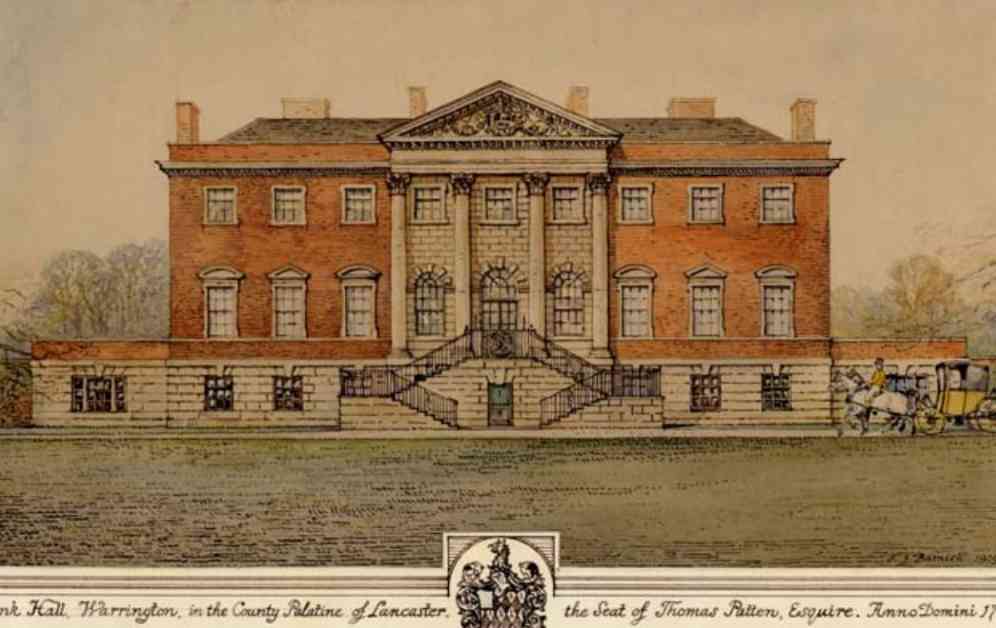Warrington Town Hall holds a significant place in the history of Warrington. Originally built in 1750 as a residence for businessman Thomas Patten, the building has seen many changes over the years. After more than 120 years in the Patten family, the hall was eventually sold to the council and transformed into Warrington Town Hall.
The Patten family played a crucial role in the industrial and social development of Warrington up until the late 19th century. Their influence can still be seen today in the names of streets, pubs, and halls throughout the town.
Designed by James Gibbs, the hall was initially known as Bank Hall and was surrounded by vast landscaped gardens with unobstructed views of the Mersey and Cheshire countryside. However, as the town grew and industries expanded, a perimeter wall was erected around the estate to maintain privacy.
The Pattens were instrumental in making Warrington a key distribution point for inland trade by making the river navigable from Runcorn to Bank Quay. Their smelting works at Bank Quay produced copper goods that were traded for slaves in Africa and used to produce sugar and rum in the West Indies, contributing significantly to the family’s fortune.
By the mid-18th century, the Pattens had risen from local merchants to become important members of the landed gentry. In 1750, James Gibbs was commissioned to build a grand country house for the family, a project that drew the attention of notable figures like Dr. Richard Pocock.
The connection between the names Wilson and Patten can be traced back to the marriage of Mary Patten to the Rev. Thomas Wilson in 1698. Thomas Wilson went on to become the Bishop of Sodor and Man, acquiring extensive lands in Lancashire and Cheshire that eventually passed to the Patten family.
The rich history of Warrington Town Hall is a testament to the legacy of the Patten family and their contributions to the town’s growth and development. Today, the hall continues to stand as a symbol of Warrington’s past and a reminder of the historic events that shaped the town into what it is today.






















